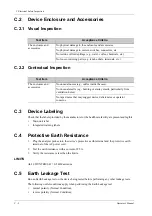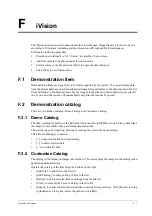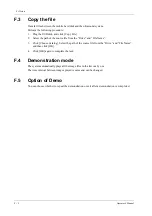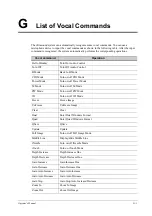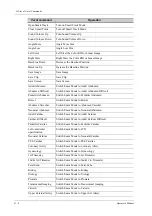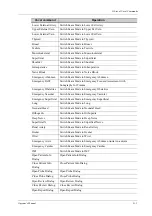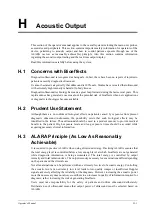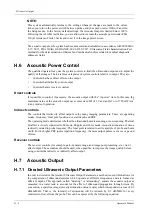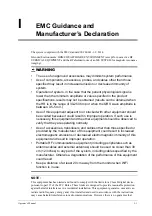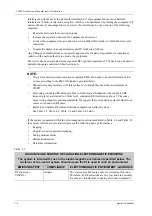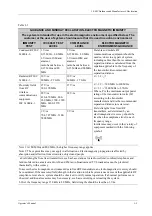
Operator’s Manual
H - 1
H
Acoustic Output
This section of the operator’s manual applies to the overall system including the main unit, probes,
accessories and peripherals. This section contains important safety information for operators of the
device, pertaining to acoustic output and how to control patient exposure through use of the
ALARA (as low as reasonably achievable) principle. Also this section contains information
regarding the acoustic output testing and the real-time output display.
Read this information carefully before using the system.
H.1
Concerns with Bioeffects
Diagnostic ultrasound is recognized as being safe. In fact, there have been no reports of injuries to
patients caused by diagnostic ultrasound.
It cannot be stated categorically that ultrasound is 100% safe. Studies have revealed that ultrasound
with extremely high intensity is harmful to body tissues.
Diagnostic ultrasound technology has made a great leap forward during the last several years. This
rapid advance has generated concerns about the potential risk of bioeffects when new applications
or diagnostic technologies become available.
H.2
Prudent Use Statement
Although there are no confirmed biological effects on patients caused by exposures from present
diagnostic ultrasound instruments, the possibility exists that such biological effects may be
identified in the future. Thus ultrasound should be used in a prudent manner to provide medical
benefit to the patient. High exposure levels and long exposure times should be avoided while
acquiring necessary clinical information.
H.3
ALARA Principle (As Low As Reasonably
Achievable)
It is required to practice ALARA when using ultrasound energy. Practicing ALARA ensures that
the total energy level is controlled below a low enough level at which bioeffects are not generated
while diagnostic information is being accumulated. The total energy is controlled by output
intensity and total radiation time. The output intensity necessary for examinations differs depending
on the patient and the clinical case.
Not all examinations can be performed with an extremely low level of acoustic energy. Controlling
the acoustic level at an extremely low level leads to low-quality images or insufficient Doppler
signals, adversely affecting the reliability of the diagnosis. However, increasing the acoustic power
more than necessary does not always contribute to an increase in quality of information required for
diagnosis, rather increasing the risk of generating bioeffects.
Users must take responsibility for the safety of patients and utilize ultrasound deliberately.
Deliberate use of ultrasound means that output power of ultrasound must be selected based on
ALARA.
Summary of Contents for Anesus ME7T
Page 2: ......
Page 58: ...This page intentionally left blank ...
Page 154: ...This page intentionally left blank ...
Page 164: ...This page intentionally left blank ...
Page 182: ...This page intentionally left blank ...
Page 190: ...This page intentionally left blank ...
Page 208: ...This page intentionally left blank ...
Page 254: ...This page intentionally left blank ...
Page 264: ...This page intentionally left blank ...
Page 280: ...This page intentionally left blank ...
Page 311: ......
Page 312: ...P N 046 018839 00 5 0 ...


